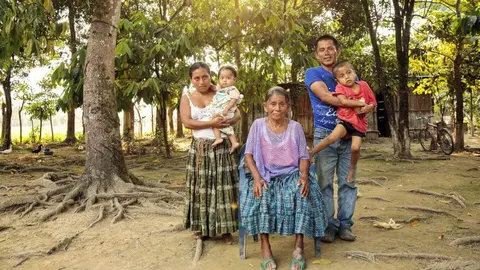COP28: Latin America must invest 3.7-4.9% of GDP in climate finance

The Economic Commission for Latin America and the Caribbean (ECLAC) presented a report on the financing and policy needs in the region for the transition to a low-carbon and climate-resilient economy, as well as current trends in regional emissions.
Launched in Dubai during the UN Climate Change Conference (COP28), the report highlights the importance of financing in sectors such as agriculture, livestock and forestry, which regionally account for 58% of greenhouse gas emissions.
Currently, financing is mainly directed towards mitigation, to the detriment of adaptation measures. Thus, in 2020, 89% of global climate finance went to mitigation, 8% to adaptation and only 3% to cross-cutting actions.
"Climate change is one of the greatest challenges of our time. For years, ECLAC has analysed its impacts in Latin America and the Caribbean and has found that the cost of inaction exceeds the cost of action (...) and that global warming will exacerbate the negative effects of extreme weather events," warned the Commission's executive secretary.
Multiplying the rate of decarbonisation
José Manuel Salazar-Xirinachs specified that Latin America and the Caribbean set the goal of reducing emissions by 24-29% by 2030, "but to do so, the region's decarbonisation rate (0.9%) would have to be four times faster".
According to the study, meeting climate action commitments also requires an investment of between 3.7 and 4.9% of regional GDP per year until 2030. By way of comparison, in 2020 climate finance in Latin America and the Caribbean was only 0.5% of regional GDP. "Closing the climate finance gap therefore requires increasing domestic and international resource mobilisation by seven to 10 times," he added.
Investment needed by sector
The document specifies the investment needed for energy transition, electrification of public transport, mitigation measures to avoid deforestation, biodiversity conservation, early warning systems and poverty prevention, among other areas.
Specifically, for mitigation actions, the investment needed would be equivalent to 2.3-3.1% of the region's annual GDP. These funds should finance energy and transport systems and reduce deforestation. The transport sector requires the most investment.
Adaptation measures require 1.4-1.8% of the region's annual GDP. This includes investments in early warning systems, poverty prevention, coastal zone protection, water and sanitation services and biodiversity protection. In this category, the largest amounts are earmarked for water and sanitation, the document notes.
Boosting employment and sustainable development
Salazar-Xirinachs explained that increasing climate finance can also bring other benefits in addition to environmental ones, including economic and social benefits; in this sense, more investment in mitigation and adaptation measures would be an important boost to growth, job creation and social development.
Conversely, if no action is taken, climate change can lead to losses. "Our paper shows that by 2030, labour productivity losses due to heat stress could reach 10% in some countries, directly affecting the region's growth potential. In addition, the impact of extreme events must be taken into account," the secretary added.
Recommendations
The document highlights the need to channel investment flows towards activities that stimulate the driving sectors of the economy, with a view to achieving more productive, inclusive and sustainable development.
In this regard, ECLAC has identified several relevant sectors and areas of opportunity for economic growth, including the energy transition, electromobility, the circular economy, the bioeconomy, the pharmaceutical industry, digital services and the care economy, among others.
It also specifies different instruments, such as carbon pricing and the inclusion of climate change in environmental impact assessments of projects.









